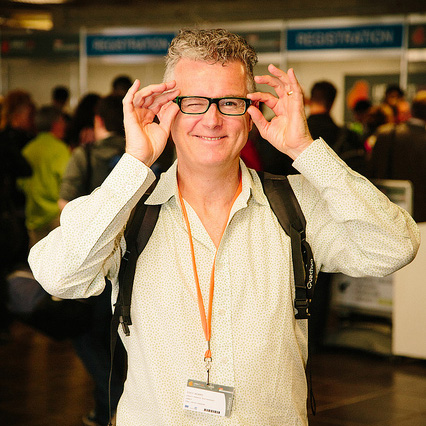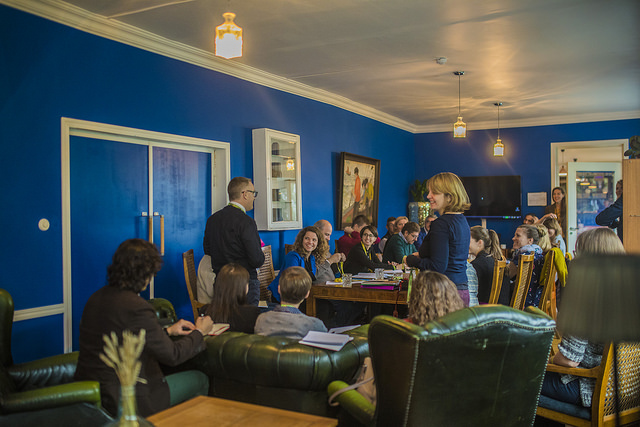Transfer networks, an URBACT Learning Lab to build capacity and promote cohesion across Europe
Edited on
16 July 2019You might not expect Twitter to be the place for informed debate on the future of the EU Cohesion Policy. But you’d be wrong. Amidst the white noise on this social media platform, a fascinating catalogue of exchanges is developing.
Investing in skills and competencies

The other week some of the big beasts popped their heads above the parapet. First, John Bachtler, Director of Strathclyde University’s European Policies Research Center, tweeted about the importance of European Social Fund + and skills in closing inter-regional gaps. Then Andrés Rodiguéz Pose (London School of Economics Professor and author of a recent influential paper on places left behind, jumped in, reacting to a recent World Bank publication on the future of Cohesion Policy as a tool to address regional inequalities across Europe.
This timely World Bank report makes for interesting reading. One of its principal conclusions relates to capacity building, and in particular the need to invest in the capacity of public administrations.
"A second implication of taking a more “region-centered” approach is that, along with local ownership, should also come capacity building, to enable local actors to plan and deliver on regional policy. The lack of local-level capacity is a major barrier both in planning and implementation. In terms of planning, it has been highlighted in several lagging regions that capacity at regional and lower (e.g., municipality) levels for planning is weak."
The case for investing in the skills and competencies of public officials, alongside organizational development, has been gathering momentum for some time. Within a busy landscape of research and activity, some of the more eye-catching contributions have come from Demoshelsinki, the OECD and NESTA. It has also been a recurring issue within the Action Planning processes of the Urban Agenda for the EU Partnerships – for example Digital Transitions and Jobs and Skills. Capacity building is also one of the three key features in the proposed European Urban Initiative, contained in the new draft ERDF Regulations.
 It is too early to say whether this represents a sea-change away from the culture of out-sourcing and reliance on external expertise that has held sway in the sector for the past twenty plus years in many parts of Europe. More likely, it is a rebalancing. After years where city authorities struggled to attract and retain talent, there is a sense that the pendulum has at least stopped – and may even be moving slowly in the other direction.
It is too early to say whether this represents a sea-change away from the culture of out-sourcing and reliance on external expertise that has held sway in the sector for the past twenty plus years in many parts of Europe. More likely, it is a rebalancing. After years where city authorities struggled to attract and retain talent, there is a sense that the pendulum has at least stopped – and may even be moving slowly in the other direction.
15 years supporting European civil servants skills to develop integrated urban planning solutions at URBACT
This shift is encouraging. However, there is a long way to go. And although it is good to see more debate on the importance of capacity building and a recognition of its value, there are not so many examples of it working well in practice. Within the context of this Cohesion Policy debate, the URBACT Programme has a great deal to contribute. For more than fifteen years it has supported cities of all sizes to more effectively deliver integrated sustainable urban development. What are the key messages to share from this experience?
Much of this experience has been gleaned from URBACT’s established Action Planning Network (APN) model. These networks have extensive experience of building municipal capacity to design and implement integrated sustainable plans.
Here are five important lessons that have shaped the approach:
|
Cities leading adaptation and transfer of Good Practices to other cities across Europe
From April 2018 the programme has extended this experience through the launch of a new network type, Good Practice Transfer networks, which will take the learning and capacity building elements further.
At the centre of these networks is an established example of urban good practice Over the next 2 years and a half, Good Practice cities will lead a network whose primary focus will be the adaptation and transfer of these practices to other cities across Europe. Once their partnership is finalized, these networks will consist of a balanced ticket of partners in terms of regional development levels. Narrowing inequalities and allowing space for peer-to-peer learning amongst cities of all sizes remains an important URBACT principle.
Peer to Peer
In this new network model, the peer-to-peer learning paradigm has altered. Where traditionally, city partners enter through the door of a shared problem, here one partner enters with a ready-made solution. Other partners share the problem for which the solution was designed. Yet, despite this distinction, learning and capacity building will take place at multiple levels for all participants.
The learning will take place at three main levels: personal, organizational and city. In addition to this, it is likely that each network will derive its own unique learning experiences across the partnership.
Individual learning
At the individual level, we expect participants in these networks to make significant professional development gains. One of the model’s strengths is that individuals are learning from their direct peers. Municipal workers are sharing their own perspectives, unpacking familiar challenges and discussing ways to solve them. Beyond this, other important urban stakeholders are doing the same.
Organisational and City Level Learning
One of the pilot transfer projects focused on the transfer of an integrated public food policy successfully developed in Sodertajle, Sweden. That good practice involved a long list of key contributors, ranging from senior elected officials, to public procurement officers, local food producers and school canteen staff.  In the resulting exchanges, each participated in relaying their learning experiences to peers from other cities. Feedback suggests that this precise mapping of stakeholders was an important contributory factor to the success of the project – now widely adopted in other EU cities.
In the resulting exchanges, each participated in relaying their learning experiences to peers from other cities. Feedback suggests that this precise mapping of stakeholders was an important contributory factor to the success of the project – now widely adopted in other EU cities.
This eclectic group of stakeholders is likely to be a characteristic of this new generation of transfer networks. As its name suggests, the Bee-path network, led by Ljubljana, places beekeeping at the heart of a new concept or urban ecology. Beekeepers, environmental policy officers and mobility experts may be amongst the stakeholder map in each city. Meanwhile, Manchester’s Culture for Climate Change project explores ways in which the creative and cultural sectors can contribute to the reduction of carbon emissions. Arts officers, NGOs and museum staff may be in the frame here. In Badalona, Silver Cities brings together older people, health and care professionals and caring NGOs to transfer a model of supporting older people to live fulfilled independent lives.
Open and Trusted Space
These learning exchanges take place in an open trusted space created by the networks. No one is selling anything and transfer partners get to hear the real story, not an air brushed version, as we are as likely to learn from what didn’t work as to what eventually did. And the learning is two way. For those intent on transferring their good practice, this is an opportunity to see it again through fresh eyes – and to gather valuable suggestions on how to make it even better.
A learning Lab
 These networks are something of a learning lab for all concerned – including URBACT, as the programme runs them for the first time. Understanding the lessons that emerge will be very important, and the programme will do this through a number of tools. For example, within each city there will be designated transfer diarists keeping track of the lessons that emerge. At the city level, each partner will also track its own journey, through an initial Transfer Report and, ultimately, through a final Learning Log.
These networks are something of a learning lab for all concerned – including URBACT, as the programme runs them for the first time. Understanding the lessons that emerge will be very important, and the programme will do this through a number of tools. For example, within each city there will be designated transfer diarists keeping track of the lessons that emerge. At the city level, each partner will also track its own journey, through an initial Transfer Report and, ultimately, through a final Learning Log.
To complement these city level products, the National URBACT Points will broker events across much of Europe to showcase the results, disseminate the learning journey experiences and, most important, seek to promote and encourage a learning cascade. In this way, the programme will reach a wider network of second circle cities, extending the capacity building and the lessons.
Cohesion Policy in action
URBACT is in the business of supporting urban transformation. Across Europe, cities face many shared challenges, and although there is no shortage of ‘good practices’, transferring them successfully is not always so easy. Keys to this include establishing a deep understanding of the practice, exploring the scope for adaptation and supporting its eventual re-use. Successful stakeholder participation is an integral part of this. Supporting them – with municipal employees often at the centre – is central to this mission.
Through this work, URBACT is making a strong contribution to building urban stakeholder capacity across Europe. In doing to so it continues to support the change needed to optimize the use of public monies and the closing of inequalities between Europe’s regions. Here, we have a tangible example of the Cohesion Policy in action.
 Submitted by Eddy Adams on
Submitted by Eddy Adams on





